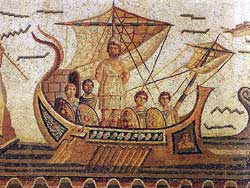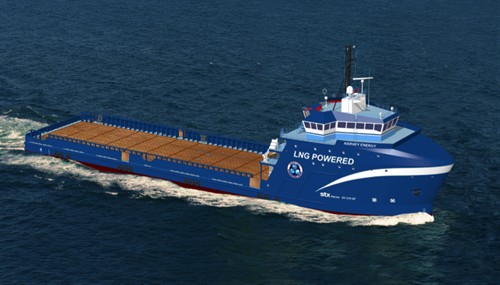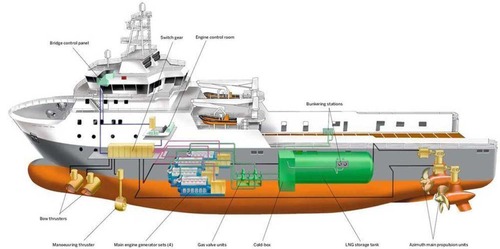How could one of the most modern cruise ships in the world, the Italian liner Costa Concordia, presumably with GPS, satellite navigation, modern charts both on paper and computers, triple redundant aircraft type “bridge navigation systems,” depth sounders and hopefully look outs, hit rocks near the island of Giglio off Italy in calm seas on a calm night in the Mediterranean?
| Update: Ship’s owners blame human error |
|
Northwest Coast Energy News Cruise line issues statement emphasizing safety precautions, but blaming captain
Media reports are saying the sinking of the Costa Concordia was caused by “human error.”AP via The Globe and Mail Cruise captain’s conduct blasted as divers find more bodies
BBC Cruise captain ‘committed errors’, say ship’s owners
Daily Telegraph Cruise disaster: ship’s owners blame human error |

(Media reports are different. Some say rock, since there is clearly a huge rock lodged in the ship’s upturned hull seen in news photos and media video, or a reef or a sandbar)
It’s a question being asked around the world at the moment, as the rescue operation continues at this writing. It’s a question being asked up and down the coast of British Columbia, not only because similar cruise ships ply the Inside Passage but because of the debate over the possibility of bitumen-carrying supertankers on the coast.
There’s another question you’re already hearing on when the television networks interview experienced mariners and naval architects. The Mediterranean off the west coast of Italy isn’t exactly uncharted waters, that region has been sailed for “thousands of years.”
The headline in Sunday’s UK Independent, “We hit a rock, it shouldn’t have been there,” brings to mind Odysseus. When Odysseus left the bed of Circe, the seer, one of the things she warned him to beware of were the “wandering rocks.” Most scholars believe that the wandering rocks were far to the south of the accident scene. The British sailor Ernle Bradford, who sailed what he thought to be the route of Odysseus in the early 1960s, and published his story in Ulysses Found, believed the Wandering Rocks were in the Straits of Messina, and might have referred to eruptions from the volcano Stromboli.
The cause of the accident is under investigation by the Italian police, who are holding the ship’s captain, Francesco Schettino, for questioning. The sinking will also be investigated by Italian and presumably other maritime authorities (since there were many nationalities, including Canadians, on board).
It is highly unlikely that there were “wandering rocks” in the path of the Costa Concordia. That’s not the point, the point is that Odyssey reflects the fact the mariners from Mycenean Greece and even earlier the Minoans and Phoenicians were sailing the waters where the Costa Concordia grounded by at least 1250 BCE, the usually accepted date of the Trojan War. Local mariners and fishers probably sailed that area for a couple of thousand years before the first traders ventured into the Mediterranean. If we take 1250 BCE as a starting date for trading ships in that region, that is 3,262 years ago.
The island of Sardinia, not far from the sinking site was, according to scholars, (including the distinguished Robin Lane Fox in Travelling Heroes Greeks and Their Myths in the Epic Age of Homer), the cross roads of the Mediterranean from about 1100 BCE to about 700 BCE. That’s because with the limited capacity of the shore hugging galleys and freighters of the era, Sardinia was a perfect meeting and trading point for the Celts to the north, the Iberians to the West, the Etruscans and others in Italy, the Carthaginians and west African people to the south and the great traders of that age, the Greeks and the Phoenicians from the east.

Simple conclusion, if we take the date from 1100 BCE, the sea around Giglio has been charted for 3,112 years. Those scholars of the sea believe that the warnings Circe gave Odysseus were adapted by Homer from real sailing instructions probably passed down as oral poems in age, between the collapse of Mycenean culture and the rise of classical Greece, when only a tiny handful of Phoenicians could read or write.
One has to wonder if the bridge crew of the Costa Concordia had just had a Roman chart, whether or not the cruise ship could have avoided the rocks/sandbar/reef.
So what went wrong and what does that mean for the controversial plan to have hundreds of both bitumen and LNG laden tankers going up and down the British Columbia coast?
Britain’s Daily Telegraph is already asking what went wrong, in Cruise disaster: Perfect storm of events caused Costa Concordia crash. The Telegraph is pointing out something critical to the plans by Enbridge for a highly computerized navigation system for Douglas Channel, the Inside Passage and the British Columbia coast: that many of today’s bridge officers don’t have the skills that Capt. George Vancouver would have demanded even from the youngest teenaged midshipman when he first charted the west coast for the Royal Navy.
The captain was reported to have said he hit a rock that was not marked on his charts. But that failed to explain adequately the scale of the disaster, which experts said should be unthinkable….
The Concordia, whose officers were all Italian, will also have operated Bridge Team Management, a system adopted from the aviation industry whereby each operation is double and triple-checked by several members of the crew….
Modern ships are required to carry voyage data recorders which store detailed information about the vessel’s speed, position, heading, radar and communications…
The first thing investigators will have to determine is whether the vessel should even have been where it was.
A source close to the investigation told a leading Italian newspaper that the boat was on the wrong course — possibly due to human error — and was sailing too close to Giglio.
The ship should have passed to the west of the island, rather than the east, according to this theory.
Yesterday fishermen on Giglio and in Porto Santo Stefano said it was very unusual for such a large ship to attempt a passage to the east of the island….
Douglas Ward, a cruise ship expert and author of Berlitz Ocean Cruising and Cruise Ships, said: “Crew don’t have as much training as in the past.
“Ships today are built with completely enclosed navigation bridges and the navigators don’t even have to learn how to use a sextant, whereas marine officers in the past always had to.
“The advance in hi-tech navigation systems is so good that we have come to rely on them. But even these can fail — look at car satnavs.”
So if the Enbridge Northern Gateway project is approved, and even if Enbridge implements all the navigation improvements it says it will, it all comes down to the competence of a bridge crew. Perhaps a GPS could tell them to turn to port instead of starboard (as GPS units in cars sometimes do) and there could be tanker hitting Gill Island, just where the Queen of the North sank, even if it is tied to an escort tug.
What makes the sinking of the Costa Concordia even more frightening is the negligence of Stephen Harper and his cabinet cronies who are gutting Canadian Coast Guard and DFO resources on both the West and East Coasts. It will be years before those super tankers might start coming up Douglas Channel. There was lots of rescue capability on the coast of Italy from the Italian coast guard and local boats. What about the giant cruise ships, a key aspect of the British Columbia economy? What if one of those ships got in trouble? The captain of the Costa Concordia was able to beach the ship right by the sea wall at the port of Giglio. On the rocky coast of BC, that giant cruise ship could go to the bottom in minutes just as the Queen of the North did, with little or no immediate hope of rescue.


 Wärtsilä
Wärtsilä
